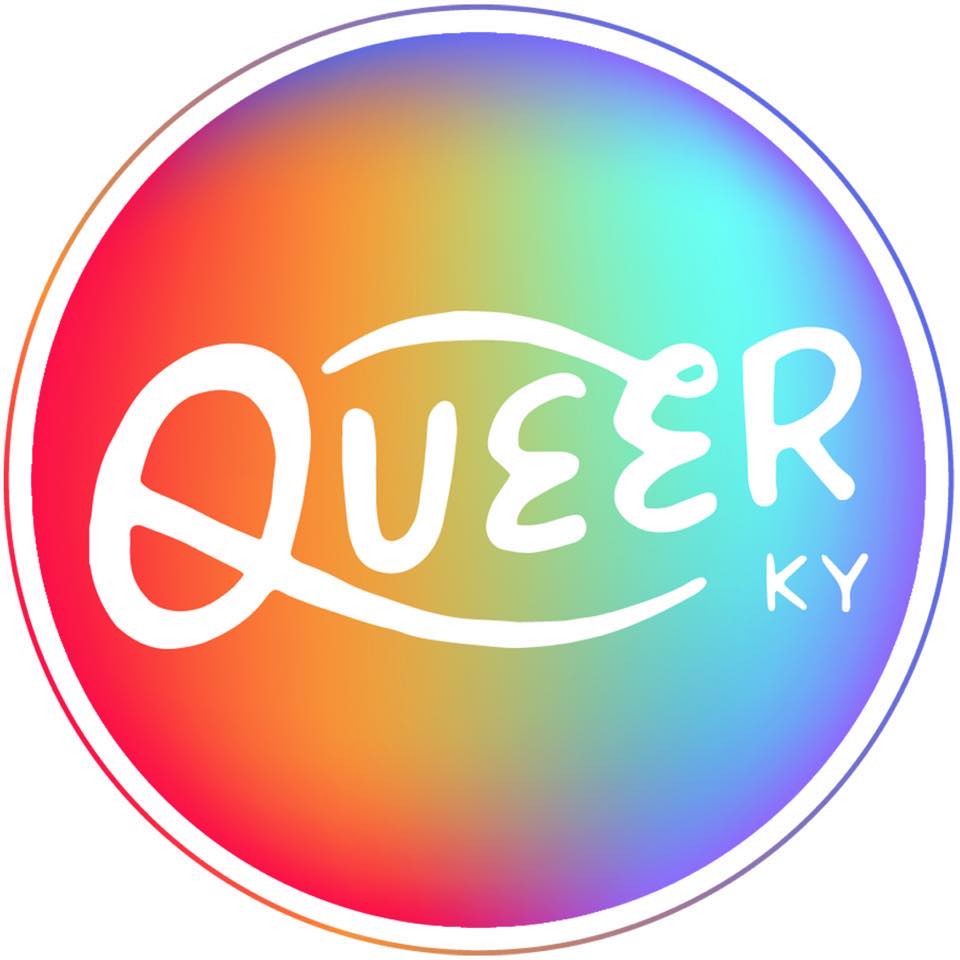

ABOVE: Installation of Cuban-American Piñatas (2012, 2016-2017, 2019), dimensions variable. Photo by Ted Wathen.
︎ Elizabeth Mesa-Gaido, Morehead
SPEAKING: Elizabeth Mesa-Gaido
Q&A
with Anna Blake
Elizabeth Mesa-Gaido is a multidisciplinary artist and educator known for her critical commentary on the global landscape and her exploration of deeply private feelings and experiences. I sat down with the artist, who lives and works in Morehead, Kentucky, in November to discuss her work and quickly felt like I was having a chat with a friend. I first became acquainted with her work during the 2019 KMAC Triennial, where the bright colors and whimsically stylized suitcases of her Cuban-American Piñatas drew me in and began a thoughtful discourse on borders and privilege. The following are excerpts from our conversation.
Anna Blake: Could you tell me a little bit about yourself?
Elizabeth Mesa-Gaido: I’ve been practicing art since the 80s. I’ve been at Morehead State University since 1992 and have been making art through that whole time period, working as a professional artist but also a professor. I’ve worked in a lot of materials over the years—I get interested in things or I find a material that I think might work better for an idea. I’ve migrated from painting to sculpture to textiles—it depends on what the idea might be for the work.
AB: How do you feel that your practice has evolved over time?
EMG: My work has gotten cleaner—if my 1985 self was to see what I was doing now, she’d be shocked because I was really into things that were dirty. I was questioning what materials could be used and I used dirt and experimental materials. Now, my textile works like the Cuban-American Piñatas are really, exceptionally clean and very different. The theme that runs through most of the work has always been family history and personal narratives.
AB: It’s interesting that you say that because I still do see a bit of grittiness and chaos in your work—especially when the Cuban-American Piñatas are displayed with their contents exposed. Do you contribute that movement towards “cleanliness” to any specific?
EMG: I remember in grad school, I was in a painting program and my work was questioning what painting was. There were some people who questioned what I was doing and I began to feel like it wasn’t as valid because it wasn’t polished. I questioned that over time—whether people would take me seriously as a professional artist and the ideas that I had. The conversation about being archival came up a lot and I asked “why does it have to be archival?” After years of that, it unconsciously worked its way in.
AB: When we talk about deskilling—and I think we can apply “dirty” looking work to that concept—it truly does seem like it is a privilege to do so and still have your work taken seriously.
EMG: Absolutely. I’ve seen some really interesting contemporary painting that is much less about being representational and is more about the emotion—and that’s where I was at the time. It was really about trying to communicate an idea. A lot of times it was texture-based, so when I switched to fabric and textile it felt like something I had always done even though I wasn’t trained in it. I questioned whether I belonged and it made me want to make sure that it was well crafted as possible so that they couldn’t critique me on that.
AB: What do you look at for inspiration as far as other artists, books, films, or any other sort of media?
EMG: I’m reading a lot right now to catch up with the Black Lives Matter movement and trying to understand where I am in my learning. I’ve been reading [Chimamanda Ngozi Adichie’s] Americanah recently and that’s where I’ve been focused. Travel is also really important for me, though I haven’t been able to. It’s part of the joy of life. My husband, sister, and I usually do an annual trip.
AB: What have been the most formative travel experiences for you?
EMG: Most of my family went to Cuba in 2011 and we returned again a few years later. It was a place we had always heard of and had seen pictures of. There’s work I did in the early 90s where I recorded my sisters’ takes on Cuba and what it was like to be Cuban-American. My sister is a great writer and she said, “If I flew there and came off a plane and stepped on the land, somehow it would make me more Cuban.” So there was something about going there, having done work about my family coming from there. To be there with my parents, seeing the houses they had lived in and the neighborhood they had grown up in was really moving. As far as I was concerned, I had left work about that behind, but it wormed its way in and I couldn’t leave it.
We’ve traveled to Europe, South America, and Africa but there isn’t anything concrete that impacted my art. It’s more about experiencing different cultures that invigorates me. I may or may not do work about what I’ve seen there but I know it plays a role in what I end up creating or materials that I use later.
AB: Can you discuss how travel impacted your Then and Now series and the Cuban-American Piñatas, and the intent behind those works?
EMG: They were originally inspired by my parent’s apartment in Miami—they had all these giant suitcases filled with commodities to take to family and friends in Cuba. When we got to the airport, everybody who was there also had these suitcases and it was clear that they were taking things to give to other people as well. When we arrived and exited customs, there was so much joy among the people waiting for their family. That really stuck with me. My original idea was a piñata, and for communication purposes it made sense for them to be suitcases.
When we think of piñatas, we usually think of them as Mexican. These are Cuban-American in the sense that they have multiple ribbons and everyone grabs a ribbon and pulls in a communal act. It’s ironic because we think of communism as a group activity, and yet for many, it hasn’t worked out so well when commodities cannot be distributed to everybody that needs them.
The contents of piñatas are intended to bring joy, so to change them to these items that many Americans take for granted was important.
AB: You’ve discussed the significance of the labor involved in these objects, can you speak to more about that?
EMG: A lot of the things I do are quite time-consuming. Each of the rows of the tissue paper on the piñatas are hand-cut, custom fit, and layered. There is something about it that is meditative. To sit and contemplate is a process that I enjoy. People can tell that there is time that has gone into the work. The idea was to honor those who are in need and those trying to help in some way.
AB: Your Dubious Utopian Structures communicate a simmering anxiety underneath a facade represented by modern architecture. What did you intend for the viewer to take away from this confrontation?
EMG: They were made in the middle of Donald Trump’s term and every day there was something absurd. We could not catch a break. So there was definitely anxiety in the markings and seismic shapes. I was thinking a lot about Russian election interference and the children being separated from their parents at the border. So for each, I did a quick gestural drawing to express what I was feeling, and that became the silhouette that was used.
Right around that time, my husband and I had gone to Palm Springs and we wanted to see the architecture. While we were there, we were very disconnected from the news and I felt a sense of calmness. I found the structure and the pattern of the homes very calming and those associations came together when I returned home and to the news. This idea that modern architecture is universal and represents utopia is something that I wanted to reference because we are not in a utopian society right now.
Because this work is inspired by media overload, I didn’t want to overload the viewer. I feel that they are overwhelming pieces in their own right. I had actually planned this past summer to do more and instead made 51 pieces that were more calming works. It represents 50 states plus Washington D.C. and each state got an abstract shape inspired by the graphs of COVID-19 cases. It was very meditative to work on each state. The irony is that they’re very tactile, but of course, we cannot touch them in the same way that we cannot have physical encounters with other people.
AB: Do you think your work enables viewers to see beyond their lived experiences?
EMG: Absolutely. If the work can make people think a little bit differently, that would be amazing. But there are also many pieces, like the COVID-19 pieces, that don’t necessarily communicate a certain message. With the work that is about my lineage, my hope was that it would impact people and help them contemplate a different person’s experience, a different person’s perspective. I don’t know if I will keep working this way. I thought I was done with my work about Cuba in the 90s but I returned. It usually comes down to a need, but I cannot force myself to address something that isn’t already circling in my head.
AB: Your work that acts as a form of self-care is a very private thing to make public. What is your mindset when working on something with a therapeutic mindset?
EMG: Everything I’ve done is therapeutic. It is art therapy. The 90s work was a way to come to terms with my teenage self. There was a brief body of work that was quirky and playful, and it was brought to my attention that it was done during a time when a lot of people in my life were ill or dying and it became clear that it was my escape. That is the biggest schism when you look at the trajectory of my work—that work was the oddest in terms of what it was about, but now I know why. I was trying to escape from other things that were happening. Art has always been something that I turned to as a kid and I always felt joy or a sense of accomplishment as part of that.
Every time I make something, I make it because I want to. But I also know that I’m a professional artist and I need to exhibit the work and talk about it. I’m a really private person and it takes a long time for me to get to know people before I can share things, so this is the most extroverted I am. Sometimes I will display it but I won’t return to it for thirty days.
AB: It’s very refreshing to hear you discuss your approach to art as therapy when so much of contemporary art revolves around the market. How do you view the value of art at a time when it’s treated as an investment?
EMG: I never expect my art to sell. Your average person is not going to buy my installations.
My parents travel a lot to Latin and Central America and they talk about artists—writers and visual artists—who used art to try to change things, like the Mexican muralists. It’s not that art can’t be pretty, but what I saw was that art could have an impact, it could be a way to communicate and try to change things. Granted, my work isn’t explicitly trying to change things, but that is something I do carry with me. As a result, I never think about how I can sell work. My most “marketable” work was made to fit into the space it was made for. I’m not opposed to selling the work, but it’s not part of my motivation.
AB: It feels that we’ve come full circle, from discussing the value of labor in your Cuban-American Piñatas and it seems that you’ve placed an intangible value on your work which is really a radical act.
EMG: Definitely. I spend three months of the year sewing and working and when it’s done it’s either on display or in storage. That is definitely strange. It’s not about the commodity, but the making.
-
Mesa-Gaido lives and works in Morehead, Kentucky. Her work is currently on view at The Art Center of Greenwood, South Carolina’s A Common Thread: Textiles Past & Present until January 9, 2021.
-
Anna Blake is an independent curator and contributor for Ruckus. She is a recent graduate of the University of Louisville, where she earned her MA in Critical & Curatorial Studies.
-
11.19.20

Installation of Cuban-American Piñatas (2012, 2016-2017, 2019), dimensions variable and Then & Now series (2012-2013), 10” x 20” each. Photo by Ted Wathen.

Dubious Utopian Structures (2019), 15” x 12” x 6”

Adam (2016), 84” x 24” x 6”







